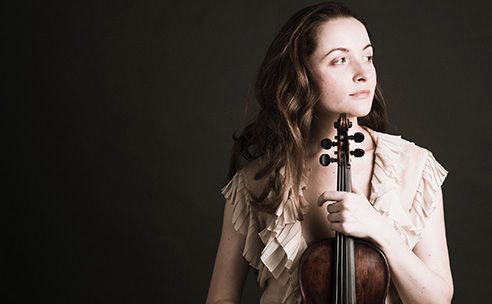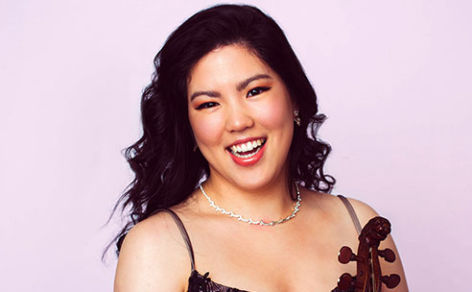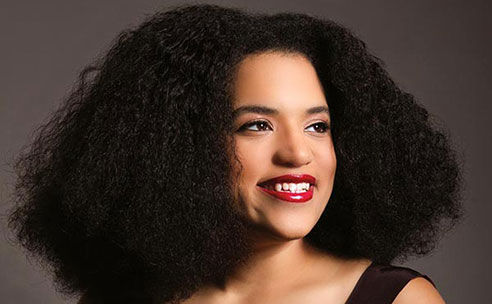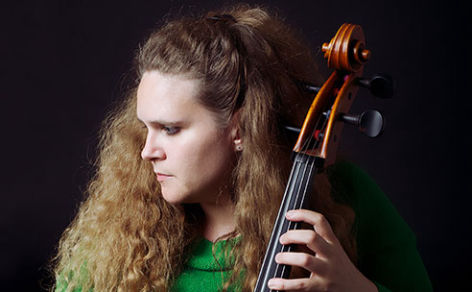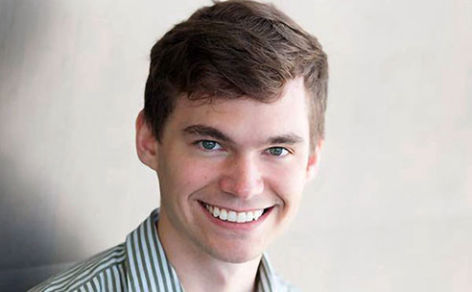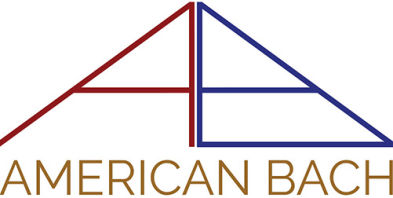Antonio Vivaldi (1678–1741)
Violin Concerto in E Minor, Op. 11, No. 2, RV 277 “Il favorito”
Antonio Vivaldi was a native of Venice, the son of one of the leading violinists of San Marco, from whom he received his earliest musical training. Subsequently, Vivaldi trained for the priesthood, taking his Holy Orders in 1703, the same year that he became director of music at the Ospedale della Pieta, a convent, orphanage, and music school in Venice. It was for the orchestra there of talented and musically accomplished young girls that Vivaldi wrote many of his almost 500 concertos. Almost all of the concertos—about 350 of which were composed for one solo instrument and strings, and 230 of those for violin—are comprised of three movements, and make extensive use, in the outer fast movements, of ritornello form, in which varied statements of a refrain (the ritornello) played by the entire ensemble alternate with episodes of freely thematic material for the soloist (or soloists in the cases of double, triple, and multiple concertos). “Il Favorito” comes from Vivaldi’s opus 11: a set of six concertos that he presented to the Holy Roman Emperor Charles VI, and that were published in Amsterdam by Le Cene in 1729. All of the concertos in Op. 11 reveal a mature composer who had gained mastery of, and even defined, eighteenth-century musical forms, structures, harmonic devices, and orchestration. Vivaldi's legendary preeminence in these compositional achievements led the young Johann Sebastian Bach to voraciously collect and study scores of Vivaldi's concertos and to learn their technical details by transcribing them for performance on the organ. This concerto's nickname, "Il favorito" ("The Favorite"), was not given by Vivaldi, but appeared on the score in later years, certainly attesting to its early-gained status as an exceptional work. While all three movements are of nearly identical length, the first exhibits a kind of dramatic grandeur that is enhanced by the imaginative variety of the passages for solo violin. The warm stillness of the middle Andante and the dotted rhythms of the final movement remind us of movements from "Autumn" from "The Four Seasons." All in all, the concerto's nickname resonates with the enjoyment that this stunning work has brought to performers and listeners alike.
Johann Sebastian Bach (1685-1750)
Violin Concerto in E Major, BWV 1042
Violin Concerto in A Minor, BWV 1041
Between the years of 1717 and 1723, Bach composed orchestral and chamber music for Prince Leopold of Anhalt-Cöthen. The young prince was an accomplished amateur musician who played keyboard instruments, the violin, and the viola da gamba, and he sang with a good baritone voice. Since Cöthen was a Calvinist principality with no tolerance for elaborate church music, Bach’s desire to write sacred cantatas had to be put on hold until he would take up his post in Leipzig. For the time being, however, the excellent court orchestra of about eighteen players was probably an inspiration to Bach. The prince went to considerable expense to assemble not only the best players in the land, but also to acquire the best instruments. These years were among the happiest of Bach’s life.
During those years at Cöthen, Bach composed (or at least put into final form) two of the Orchestral Suites, the Brandenburg Concertos, the violin concertos, the sonatas and partitas for solo violin, and the solo ‘cello suites. All of these are considered to be supreme eighteenth-century masterpieces of their genres. The concertos, especially, mark Bach’s fascination with, and his supreme mastery of the Italian concerto grosso style, which is marked by the interactions of soloist(s) and ripienists (the non-soloist members of the orchestra), who play alternatively or together (called tutti).
This process is most easily recognized in the opening movement of the E Major violin concerto, BWV 1042, a work that Bach most probably composed during his years as court Kapellmeister at Cöthen (1717-23). Here the opening triad is particularly memorable and, indeed, when the solo violin plays independent material, fragments of this ritornello continually interrupt, as if to reaffirm its dominance. It is tempting to see Bach’s approach to ritornello writing as an allegory of his position in court life: the individual’s expression must be articulated entirely within the hierarchy of the princedom, and only once this relationship has been fully established can the soloist be accorded more freedom as the piece unfolds. Not only is the ritornello repeated at the end, but, in fact, the entire first section: thus, the thematic independence of the violin is checked by a return to the initial order, or, rather, it is framed and supported by the two outer pillars of courtly society. In the central movement, the violin commands the stage with its long, lyrical lines expressing anything but an outer, objective, courtly order. Nevertheless, the whole is supported by an ostinato bass pattern, which preserves the same motivic content throughout virtually every measure of the piece. Thus, the most heartfelt expression is heard only against an unobtrusive but entirely necessary bass line, again representing the individual within the context of an indispensable background order. Exactly the same sort of relationships are evident in the final movement, a joyous dance (rondo) in which the opening theme returns, with almost mechanical regularity, in the tonic of E Major.
Prince Johann Ernst of Saxe-Weimar, one of Bach’s patrons, was a Vivaldi enthusiast, collecting his publications and even going so far as to write his own concertos in that style. For him, Bach transcribed several of Vivaldi’s compositions, work that bore fruit in Cöthen when the influence had been fully absorbed. For Cöthen’s star violinist Johann Spiess, Bach wrote several concertos including the Concerto in A Minor. The soloist’s virtuosic turns, the quick movement from ritornello to solo episodes, the strong melodic profiles, as well as long melodic inventions over an ostinato bass are indebted to Vivaldi’s example. But we also find more complex phrasing and melodic elaborations in counterpoint as well as a different, more mobile harmonic sense that is clearly Bach’s response to the music of Vivaldi, known as the “red priest” due to his famously bright red hair. A lively gigue-like final movement uses as its theme a subject derived from the opening measures of the first movement, a device that Bach also used in his Violin Concerto in E Major.
Johann Sebastian Bach
“Aria” for Viola, Violoncello, and Harpsichord, from BWV 156
Many texts from Bach's cantatas can seem overly drenched in lugubrious rhetoric, especially when we forget that verses about a soul's readiness to pass to a happier existence in heaven served to give much-needed hope to a populace that often struggled to survive amidst extremely difficult and common situations of poverty, illness, and hunger. The barbarous Thirty Years War (ended in 1648) had left in its wake destitute repercussions that would continue to affect generations of German culture for nearly a century. Certainly, the dour tone of religious texts that were written during that period would be utilized by composers and worked well to magnify some of the most important precepts and dogma of German Lutheranism at the time. This aria's text and title — "Ich steh mit einem Fuß im Grabe" ("I am standing with one foot in the grave") — belies its intended message of comfort and positive outlook. In the cantata score, unison violins and violas play figurations of notes that, although descending, contribute a lightness to the melody. Beneath is a bass line that begins hesitantly, again with descending notes representing stepping down into a final resting place, with each note change sounding "off the beat" and depicting an initial reluctance. But soon the tenor voice enters and, as an eighteenth-century congregation would have recognized, the message is one of hope, a longing for better days that is confirmed by sopranos intermittently singing a chorale that is best summed up by its final line: "Everything is good, when the end is good." In our arrangement for the musicians in this concert, the unison strings part is given to solo viola, the tenor part is given to solo 'cello, and the chorale melody is intoned by violins.
Antonio Vivaldi
Concerto for 3 Violins in F Major, RV 551
Vivaldi's first musical instruction was on the violin, and the existence of some 230 concertos composed by him is sure evidence of his love for the instrument. Accordingly, it is easy to sense the joy that he must have felt while composing the Concerto for 3 violins, strings, and continuo in F major. It brought opportunities for creating unusual and colorful interaction of the three solo instruments that seem to have inspired Vivaldi greatly. At the outset of the first movement, each soloist takes a turn in the spotlight, but the interplay is always collaborative with all three parts frequently playing very similar passagework. The occasional differences usually amount to distinct but complimentary figurations assigned to the third violinist. Those moments tend to meld together the first and second violinist in high-energy accompaniments to the third player's forays. The middle movement treats the listener to a wonderful effect: one violinist plays a singing cantabile melody, another plays pizzicato notes across the entire range of the violin, and the other plays bowed arpeggios with the composer's instruction "con piomba" which can be translated as dance-like swooping. Overall, it creates a very engaging and lustrous sound. The final movement, in a triple meter, distributes the workload quite equally among the soloists who toss the ball around but combine near the end for a barrage of figurations and descending scales in the minor mode until a final and condensed restatement of thematic material from the movement's opening brings this ingenious concerto to its close.
© 2021, American Bach Soloists
